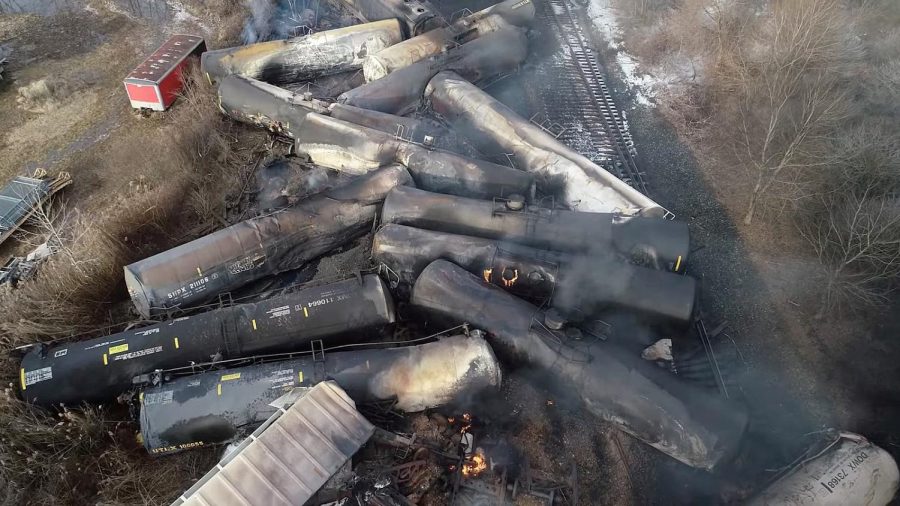When a freight train carrying hazardous materials derailed in East Palestine, Ohio, authorities were called in to begin disaster protocol and address community concerns. Despite the protocols, Ohio residents are still searching for answers and worried for their safety.
On Feb. 3, twenty cars derailed, spilling 11 rail cars full of toxic chemicals. Out of the cars with toxic chemicals, five of them contained vinyl chloride: a toxic, carcinogenic, and highly volatile gas found in PVC pipes, vinyl products, and high-end fashion.
“It polymerizes really quickly at relatively low temperatures, and so they were monitoring the temperature. If it gets above a certain temperature, then you start to get some weird side reactions where it forms these kinds of really stable transition chemicals, called epoxides,” said Seth Ebersviller, assistant professor of Environmental, Safety, and Occupational Health Management at the University of Findlay.
Epoxides are very unstable and tend to explode, and the fire was not under control, so the explosion became a concern. To avoid this, authorities and the Northfolk Southern Railway Company made an emergency decision to burn the chemicals that spilled in a “controlled release.” However, the impacts of burning the vinyl chloride could leave detrimental effects.
Vinyl chloride could also be the cause of some health effects people have linked to the derailment aftermath.
“In the long term, it is possible that there will be health issues. Some of these compounds are carcinogens, and many persist in the environment and may enter into the drinking water eventually. The residents of East Palestine will need to have their water tested frequently for the foreseeable future,” said Nicole Karn, lab supervisor and associate professor in the Department of Chemistry and Biochemistry at the University of Findlay.
If it is in the East Palestine municipal water supply, vinyl chloride can contaminate surfaces that get in contact with this water. The train also released several other hazardous chemicals, which created more potential for harm.
“If it gets into the groundwater supply, specifically the well water supply, it can actually sit within that well, and as people are using that water, just like radon gas, it can seep through your basement if you’re over a pocket, or it can come through your shower, and you can get exposed that way,” said Kim Lichtveld, associate professor and chair of Environmental Safety and Occupational Health Management at the University of Findlay.
Byproducts that form when vinyl chloride is burned include phosgene and hydrogen chloride, which form hydrochloric acid when in contact with water.
After the derailment, Norfolk Southern implemented testing on water, air, and soil. The Ohio Environmental Protection Agency (EPA) is also ordering the railway company to take responsibility for cleanup, reimbursement, and other demands by the organization. However, the testing has stirred up controversy among the scientific community and frustrated residents.
“Here’s the train company sending off a sample to their lab that they chose. And it may be 100% legitimate, but if you have a cynic with a loud voice in a community, it’s going to make distress and make it feel like it was an invalid test,” Lichtveld said.
To build more trust between residents and the authorities, Lichtveld and Karn suggest that the Ohio EPA should provide more accurate, clear, and digestible information, especially since there have been some reports deemed as untrustworthy by the scientific community following the event.
“It’s going to take really good public relations, so it’s not just having a good study. You need to have boots on the ground with people who are well informed who know how to deal with the public’s concern, how to answer their questions, and not beat around the bush or dismiss them,” Lichtveld said.























